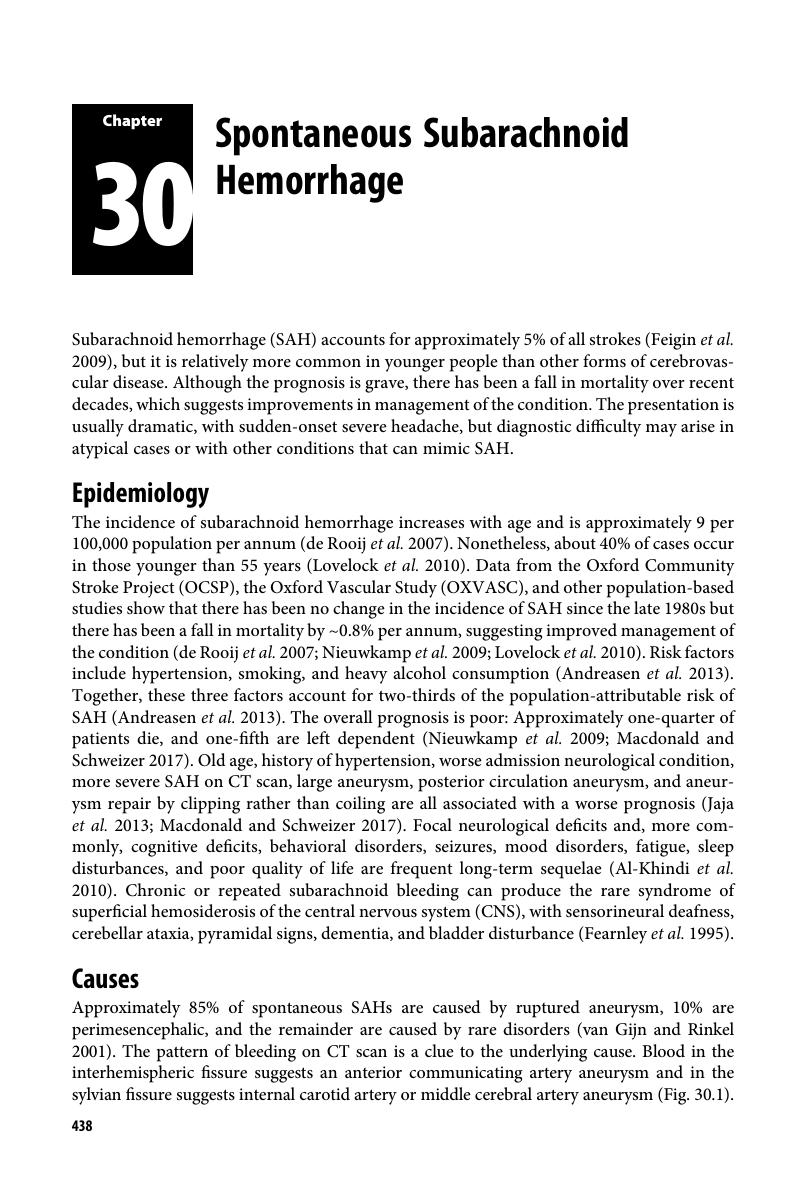Book contents
- Transient Ischemic Attack and Stroke
- Transient Ischemic Attack and Stroke
- Copyright page
- Contents
- Preface to the Second Edition
- Section 1 Epidemiology, Risk Factors, Pathophysiology, and Causes of Transient Ischemic Attacks and Stroke
- Section 2 Clinical Features, Diagnosis, and Investigation
- Section 3 Prognosis of Transient Ischemic Attack and Stroke
- Section 4 Treatment of Transient Ischemic Attack and Stroke
- Section 5 Secondary Prevention
- Section 6 Miscellaneous Disorders
- Chapter 29 Cerebral Venous Thrombosis
- Chapter 30 Spontaneous Subarachnoid Hemorrhage
- Chapter 31 Vascular Cognitive Impairment: Epidemiology, Definitions, Stroke-Associated Dementia, and Delirium
- Chapter 32 Vascular Cognitive Impairment: Investigation and Treatment
- Index
- References
Chapter 30 - Spontaneous Subarachnoid Hemorrhage
from Section 6 - Miscellaneous Disorders
Published online by Cambridge University Press: 01 August 2018
- Transient Ischemic Attack and Stroke
- Transient Ischemic Attack and Stroke
- Copyright page
- Contents
- Preface to the Second Edition
- Section 1 Epidemiology, Risk Factors, Pathophysiology, and Causes of Transient Ischemic Attacks and Stroke
- Section 2 Clinical Features, Diagnosis, and Investigation
- Section 3 Prognosis of Transient Ischemic Attack and Stroke
- Section 4 Treatment of Transient Ischemic Attack and Stroke
- Section 5 Secondary Prevention
- Section 6 Miscellaneous Disorders
- Chapter 29 Cerebral Venous Thrombosis
- Chapter 30 Spontaneous Subarachnoid Hemorrhage
- Chapter 31 Vascular Cognitive Impairment: Epidemiology, Definitions, Stroke-Associated Dementia, and Delirium
- Chapter 32 Vascular Cognitive Impairment: Investigation and Treatment
- Index
- References
Summary

- Type
- Chapter
- Information
- Transient Ischemic Attack and StrokeDiagnosis, Investigation and Treatment, pp. 438 - 455Publisher: Cambridge University PressPrint publication year: 2018

